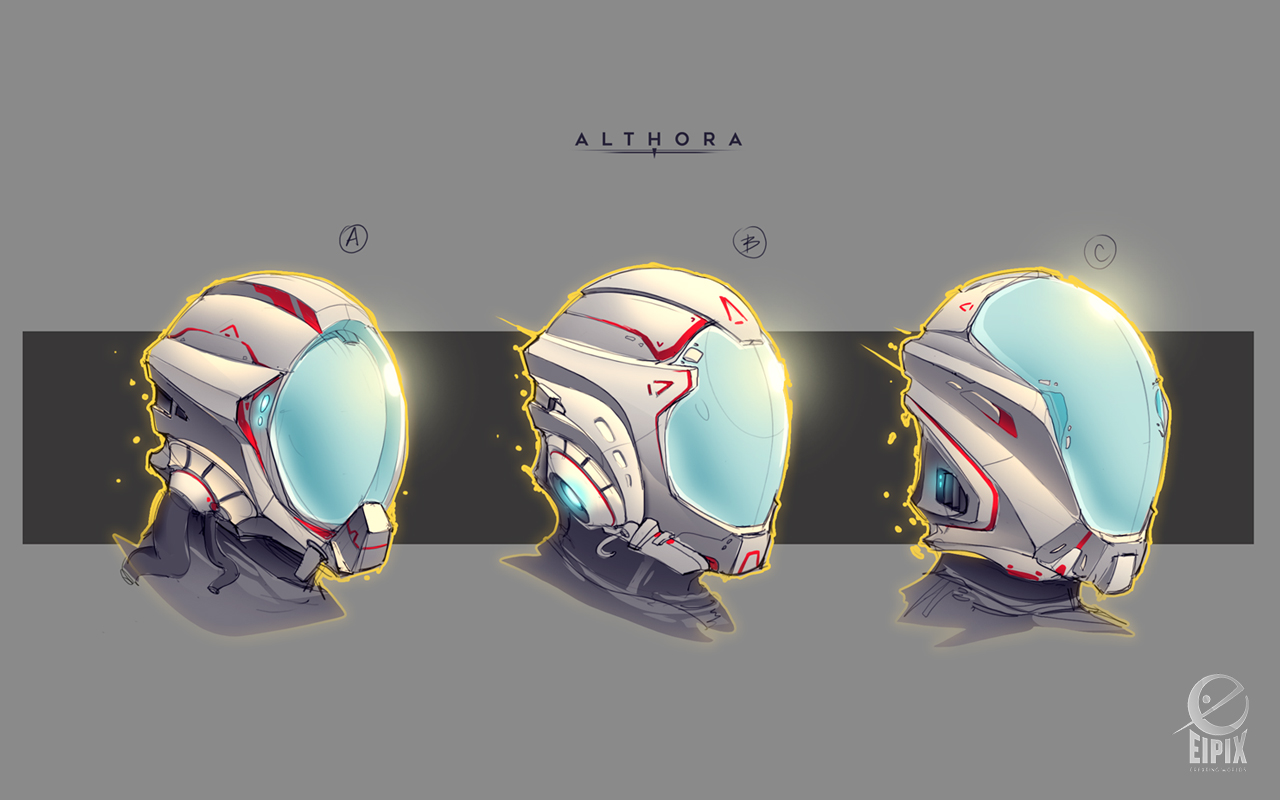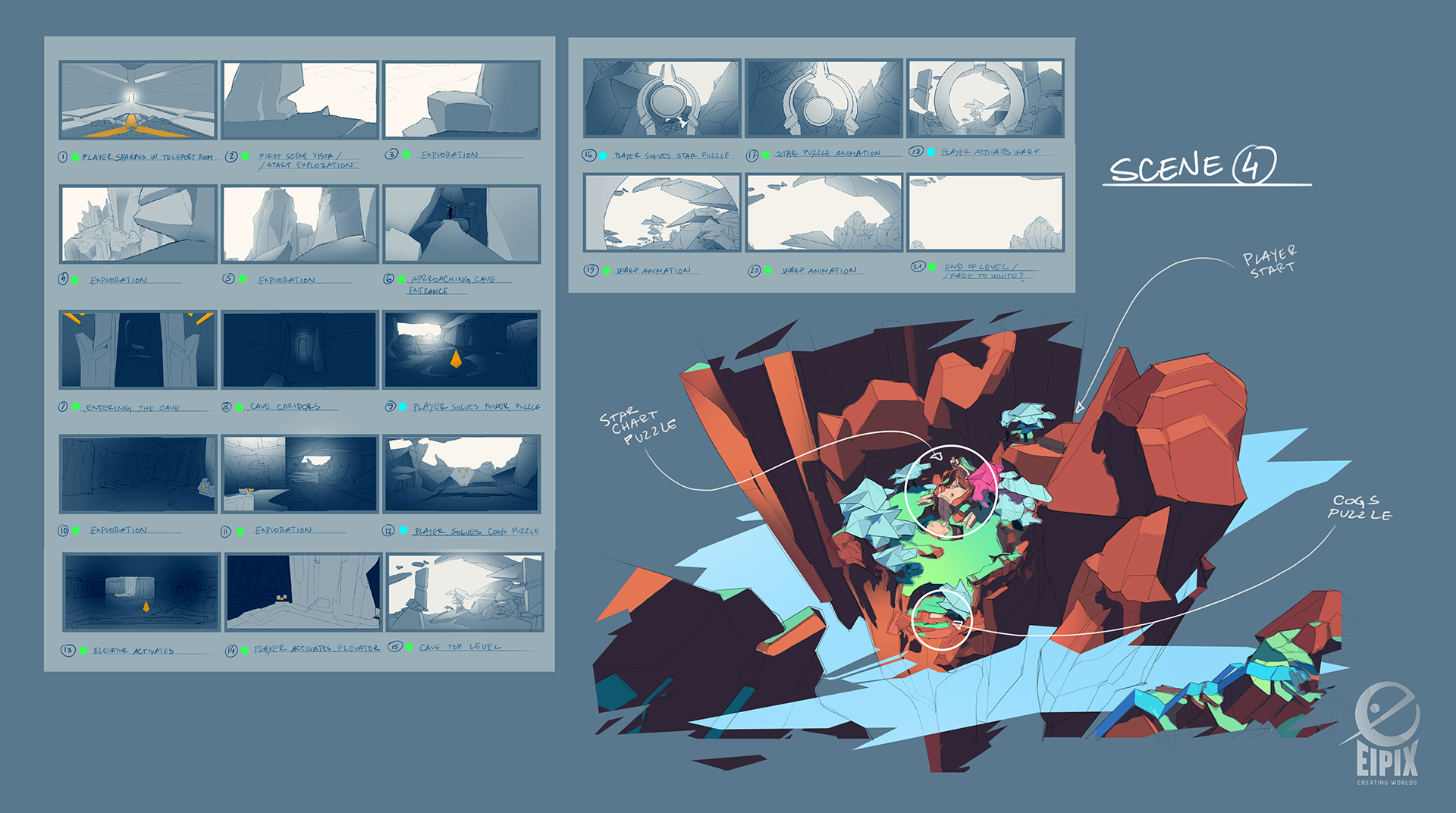Starting in mid-2016, Eipix Entertainment embarked on a new path in game development – VR mobile gaming. Even though our developers had the opportunity to work with a new medium which came with its own set of rules before, VR technology proved to be a whole different animal. VR is a multimedia intermediate in its infancy, even though the idea has been around for 30+ years. We are all excited to be at this party, but no one really knows what we’re celebrating. It is definitely evolution at work, though the main question remains this: are we evolving the machine, or our own perception?

HOW VR TECHNOLOGY SHAPED THE GAME
VR was a completely new technology for the development team that worked on Althora, the game designated as the first Eipix VR project. Although VR technology offers developers a unique way to share a world with players, it also imposes some pretty strict limitations. These limitations made the team push the boundaries of their creativity and problem-solving skills in order to present their idea of a space adventure to the player.
There are many factors to consider when creating a remarkable and immersive VR experience. One of them is the 15-20 minutes time frame before the device overheats. The game, level, and visual design had to be structured to fit within this boundary. Of course, there was also the matter of motion sickness to consider. The team didn’t kill two birds with one stone – they took out the entire flock, and the stone in question was the main character’s helmet. The helmet was designed to ground the player, significantly reducing motion sickness; it shows the correct temperature of the device, and it is a virtual representation of the real Gear VR headset that the player is wearing, adding an extra layer of immersion.

Regarding immersion, the team had to consider the best way for the player to interact with the game environment. The Gear VR touch pad (located on the right side of the device) was briefly considered, but this idea was disregarded because holding the hand in an upright position would tire the player too much. Instead, the player’s gaze became the main controller: the player moves by looking at locators within the game level and interacts with objects in general just by looking at them long enough.
The team decided on a low poly art style in order to achieve the best visual experience with as few polygons as possible. This was a spectacular success. The visual goal for the game was a distinctive environment that presents the biome of the island location with ease.

One of the big challenges for the production team was optimization, which is difficult in itself, and more so when optimizing for a mobile VR game. The team set a goal of 60 FPS, which is the standard for a truly immersive experience with minimized chances of motion sickness. Despite a series of difficulties, the team managed to make the frame rate go from 30 FPS to a solid 60 FPS in just two weeks.
THE ALTHORA STORY

The road from the first brainstorming session to the actual release of the game was a long one, but the team thoroughly enjoyed every step of the way. The first idea for the game was a VR survival game, which gradually shifted to a puzzle adventure IN SPACE (originally thought up to be nonlinear and set on a single alien island).
The game design wasn’t strictly defined in the beginning, so production started almost simultaneously with pre-production, and there was a lot of back-and-forth in the pipeline. Still, a valuable lesson in game design, project management and teamwork was learnt from the process. The whole team had a part to play in game design, so it was truly a group effort. Part of the team thought the focus should be on gameplay only, and others believed that the story should be pushed forth at all times. From this mix emerged a one-of-a-kind product.
There were many different ideas throughout the process of development. Some were abandoned in order to make room for further improvements, and some fit the team’s vision perfectly and just had to make it into the final version. For instance, in an early version of the game, the player could go through transition caves, while the next level loaded in the background. However, the team liked the transitions so much that they decided to incorporate them into the game and abandon the use of asynchronous level loading. The basic environment, which included only rocks and architecture at first, needed to be enriched with plants and wildlife. The team carefully considered the type of animal that might live on an alien world of floating islands, and finally settled on a flying whale. The whale was there in order to look impressive at first, but it soon became an important part of the gameplay experience. The whale ride from island to island was an endless source of fun for the whole team.

THE RENAISSANCE OF SOUND
We aren’t reinventing the wheel when we say that sound plays a huge role in player immersion and the creation of a perfect illusion, but this is doubly true when talking about VR games. In order to build a conforming sonic experience, the team had to keep the intermediate in mind – the VR headset. The person wearing the headset is supposed to get the impression of being “inside” a virtual space. Any break in this audiovisual continuity could potentially jeopardize the overall experience. The positioning and virtualization of sound are important, they have to relate to what the player sees and does – this is achieved through spatialization. The Oculus Native Spatializer was selected for the job as the most complete spatial audio technology at the time (and extensively documented, too).
Creating the emotional aesthetic of Althora was a very important step in audio worldbuilding. The soundtrack is comprised of pleasant acoustic and electronic musical sounds that develop in a schizophrenic way throughout the game. As for ambience sounds, when you switch from a fixed flat screen to a motion-dependent spherical view, it is crucial to keep one thing in mind – people need to feel safe when they play a VR game. The Althora audio team worked on making Althora a relaxing experience without jump scares or harsh sounds, with less transients and more air and transparency.
THIS SIDE OF THE LOOKING GLASS
In the eyes of the team, Althora will never be completely finished, as they could always find new ways to improve and enhance the Althora experience. Just two weeks before the game’s release, a new first level was created from scratch. There was a lot of enthusiasm during the development process, resulting in a lot of overtime and working after hours. It often seemed that the team’s enthusiasm was at its highest whenever there was a deadline approaching, and new effects, models and animations were added just hours before a build – and it all worked somehow.
The Althora project was a broody experience. It took an open mind and a willingness to deal with severe development technology limitations. But at the end of the day, what really matters is that this was a huge step for Eipix production, a test of mental strength for the team, and an insightful experience. Everything taken into account, each and every member of the Althora team would do it all again in a heartbeat.

Althora was released on May 11th, 2017. It is currently featured on the Oculus Store, and if you wish to give it a go you can do so here.





